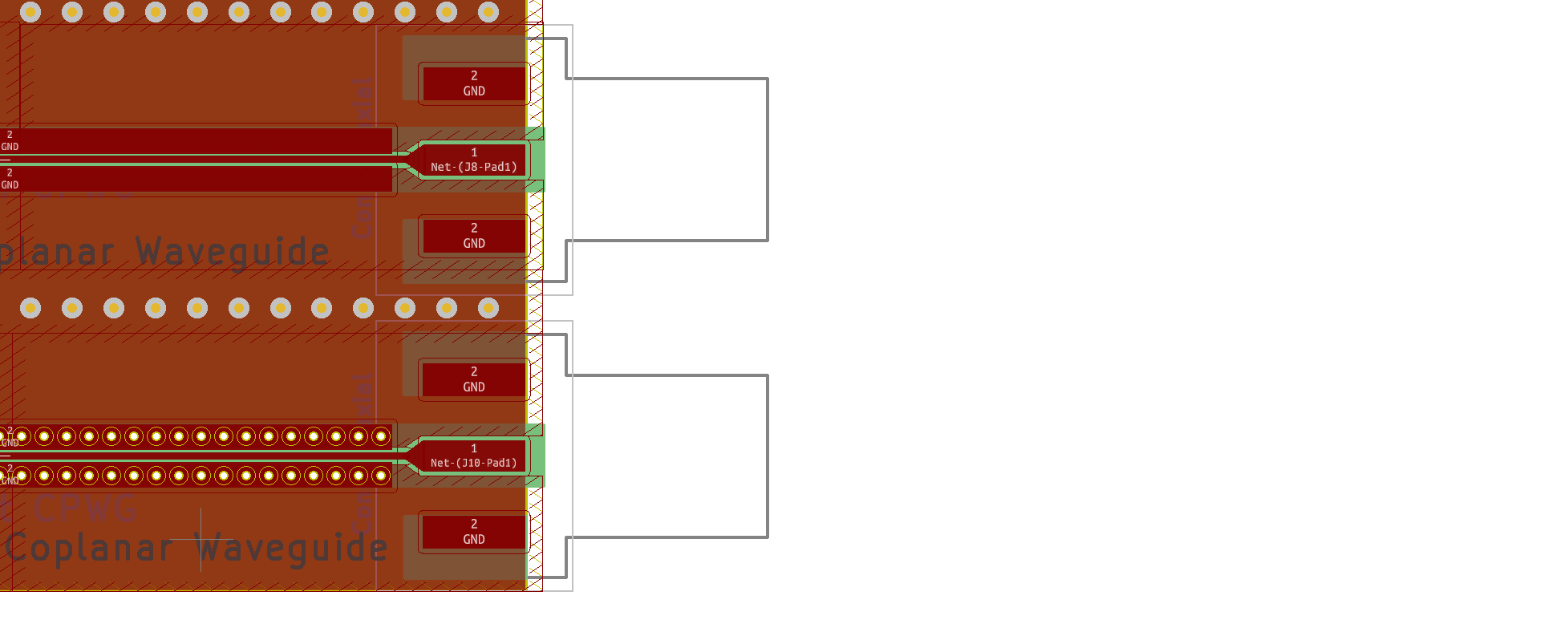
RF Test Coupon (2022, Age 17)
This is one of the more expensive sets of wires I have. They’re special wires, though!
The idea is simple. I need to be able to produce PCB transmission lines reliably and with very low return loss. My PCB house, JLCPCB, offers some guidance on designing these, which initially seemed alright. Right up until I tried to do a routine simulation in Sonnet. I needed a 50-ohm microstrip transmission line on the JLCPCB stack-up, but I realized there was a problem. The substrate height they used in their calculations was bizarre and did not match their actual stack-up.
So I did the logical thing and designed five weird and expensive wires to test them. I designed two coplanar waveguides, one tuned with optimization and hand-design in Sonnet, and the other generated by the Saturn PCB calculator. The last three are microstrips, one optimized with Sonnet, one from Saturn PCB, and one with the given JLCPCB specification. And 10 SMA connectors.
The most dramatic result is the JLCPCB microstrip, as predicted, performing hideously. This is likely due to their error in the ground plane height calculation on the 7642 stack-up. They would be correct if it were a two-layer impedance-controlled board, but they only offer four-layer impedance control. Recently, they’ve allowed us to select our stack up more precisely for impedance-controlled boards, and I ought to run this again with that in mind.
The Saturn calculator results really surprised me, performing about as well as my hand-designed and optimized transmission lines, both in coplanar waveguide and microstrip. Of particular interest are the S21 losses in the CPWG at around 3.5GHz, and the excellent performance comparably of the Saturn microstrip in the same frequency range. In the future, I hope to examine QucsStudio.
The Sonnet transmission lines, at last, performed quite pleasingly. Notably, the Sonnet-designed microstrip trailed the Saturn microstrip quite well but was never appreciably superior to the Saturn microstrip. The Sonnet Coplanar Waveguide performs pretty excellently across frequency ranges but is not outstanding in any sense, most notably outperformed seriously by the Saturn CPWG from 2.8GHz to 3.3GHz, after which the Sonnet CPWG picks up in performance greatly.
This is great data to have, and it will influence many of my future designs.